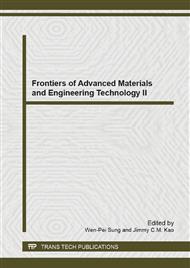p.1969
p.1973
p.1978
p.1982
p.1986
p.1995
p.2006
p.2010
p.2014
An Experimental Study on the Rainfall-Runoff Progress of Wheat under Different Slope Angle
Abstract:
Rainfall-runoff process plays an important role in hydrological cycle, and the study on the rainfall-runoff will provide foundation and basis for research on basin hydrology and flood forecasting. In this paper, the surface runoff and subsurface flow of wheat were observed in the laboratory by artificial rainfall, and analyzed the cumulated surface runoff and recession process of subsurface flow by regression analysis. In addition, the factors affected the runoff and response of soil moisture on the runoff coefficients was also discussed. Results showed that the rainfall intensity, soil coverage and slope had important influence on the surface runoff generation, and the surface runoff was observed when the total rainfall amount exceeded 32mm and 13mm for 5°and 15° slope respectively. The cumulative surface runoff could be expressed as a power function, which had higher determination coefficient R2 (0.92~0.999). The subsurface flow was only observed at the ripening period and wheat stubble treatment, and mainly affected by slope angle and initial soil moisture, whereas rainfall intensity showed little impact. The recession curve of subsurface flow can be described as a simple exponential expression or power function, which the determination coefficient was 0.88 and 0.94 by regression analysis, respectively. Moreover, there was an obvious threshold (approximately 30%) between the average initial soil moisture and runoff coefficients, which the runoff increased significantly as above the threshold.
Info:
Periodical:
Pages:
1986-1994
Citation:
Online since:
April 2014
Authors:
Price:
Сopyright:
© 2014 Trans Tech Publications Ltd. All Rights Reserved
Share:
Citation:


